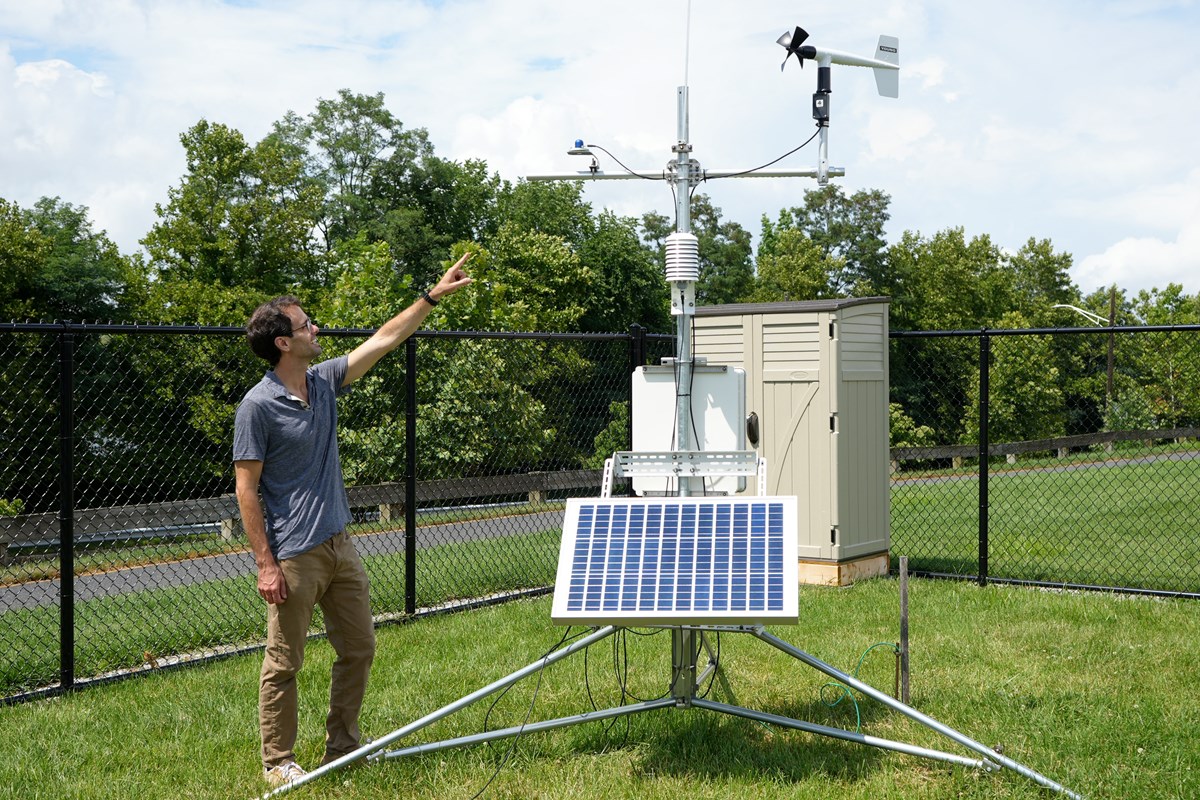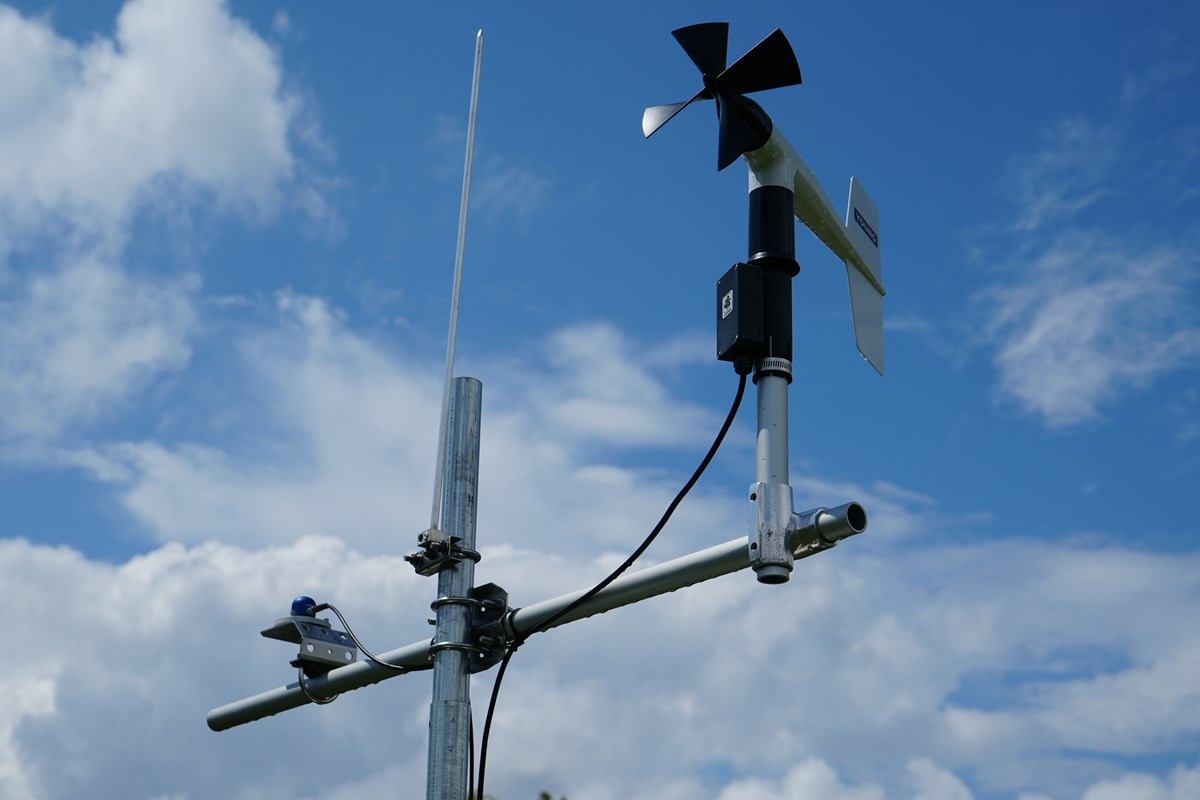South Campus Station Provides Real-Time Observations, Research Opportunities and More
 Image by Brooke Coupal
Image by Brooke Coupal
08/12/2024
By Brooke Coupal
When classes start in early September, students will wake up wondering what they should wear. Will they need a rain jacket? A sweater? Will it be warm enough to wear shorts?
Thanks to a new weather station on South Campus, people can get accurate and reliable information about current weather conditions at UMass Lowell.
The UMass Lowell Weather Station, which officially came online in mid-July, provides real-time weather observations, including air temperature, precipitation, wind speed and direction, relative humidity, solar radiation and soil moisture. Data from the weather station, which is located next to the UMass Lowell Schueller Observatory, gets updated every 10 minutes on a UMass Lowell webpage created by the Office of Brand, Communications & Creative Strategy.
“Weather conditions can change dramatically over space, so relying on a station that’s a town or two over or even another station in Lowell is not necessarily representative of what’s happening on campus,” says Christopher Skinner, an assistant professor in the Department of Environmental, Earth and Atmospheric Sciences. “Now, we have measurements that are local to the campus, and that’s really useful.”
Skinner oversaw the assembly and calibration of the solar-powered weather station, which includes instruments ranging from a rain gauge to a digital temperature sensor, and sought out students who could offer assistance. Sam Morgan, an honors meteorology and atmospheric science major, jumped at the opportunity to work on the weather station after learning about it during an American Meteorological Society meeting.
 Image by Courtesy
Image by Courtesy
“The weather station offers great experience for those trying to get into the field of meteorology,” says the incoming sophomore from Boulder, Colorado. “Next summer, I’m looking to get an internship, and working at the weather station will help a lot with that.”
Troy King ’23, who earned his master’s degree in environmental studies with an atmospheric science option, helped test the weather instruments inside Olney Hall before setting them up on South Campus.
“It’s important to get firsthand experience in the field,” says King, who credits the weather station experience with helping him secure a job as an environmental scientist for Bluestone Environmental at the U.S. Army Garrison in Fort Devens, Massachusetts.
Skinner envisions students leveraging the weather station for research on weather trends and climate change. He also sees it as a way to elevate different atmospheric science courses.
“It’s an amazing teaching and learning laboratory,” says Skinner, who plans on using the permanent weather station in his Atmospheric Measurements and Data Analysis course this fall.
Data collected from the weather station is already benefitting the campus. The grounds team has connected the weather station to the campus’ irrigation system to flag when irrigation is needed, alleviating water waste.
 Image by Brooke Coupal
Image by Brooke Coupal
“We’re already a very sustainable campus, and this is another step toward increasing our sustainability,” Skinner says.
There are plans to archive data from the station so people can look at past weather reports online. The station is also connected to the commercial company Weather Underground, making the campus weather data available to a broader audience.
With the weather station full of possibilities, King is excited about the future of meteorology and atmospheric sciences at UMass Lowell.
“I’m proud that I played a part in getting the weather station running,” says King, who grew up in McCalla, Alabama. “Students will get more hands-on experience with weather at UMass Lowell that they aren’t able to get at a lot of other places.”


